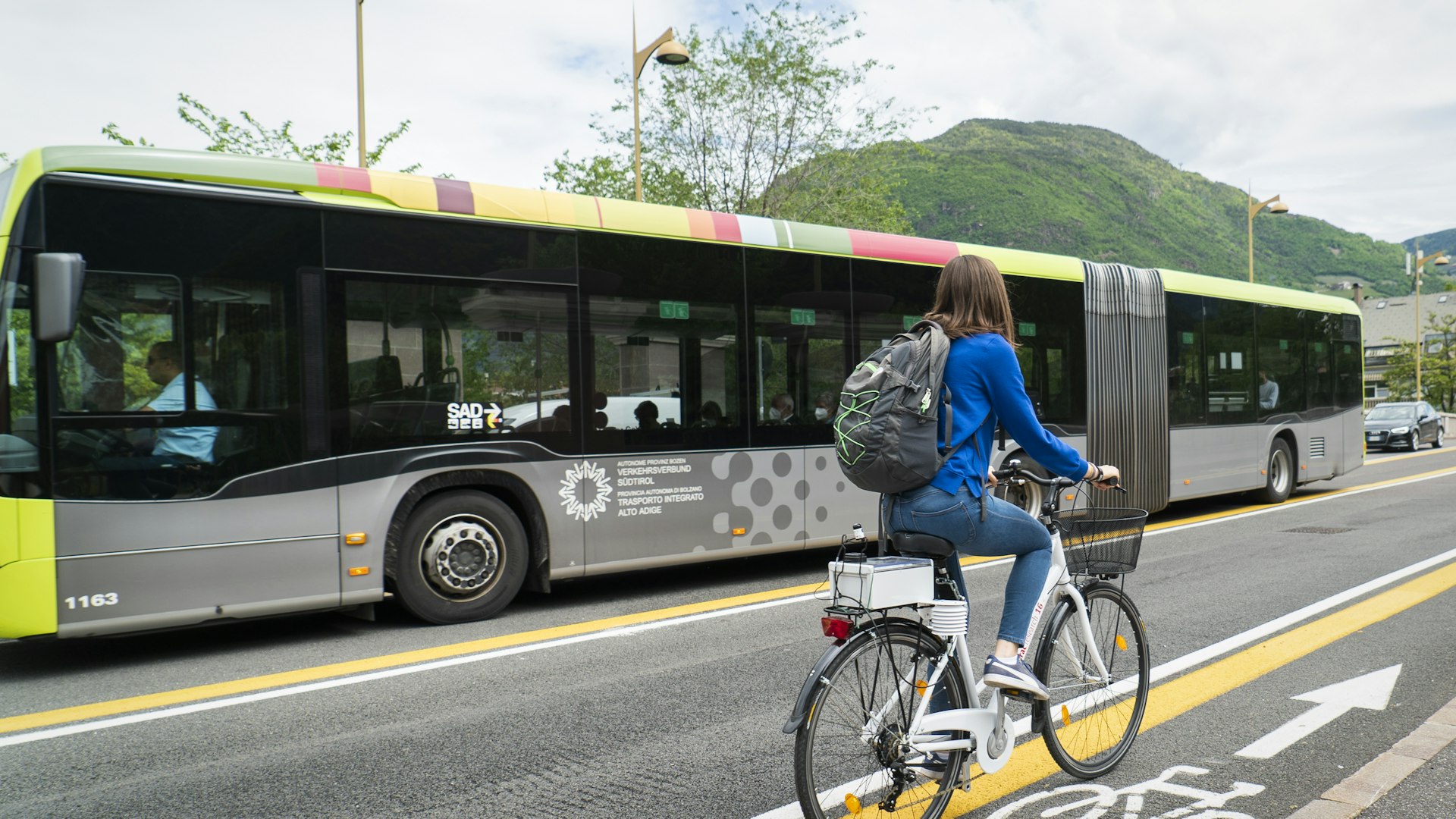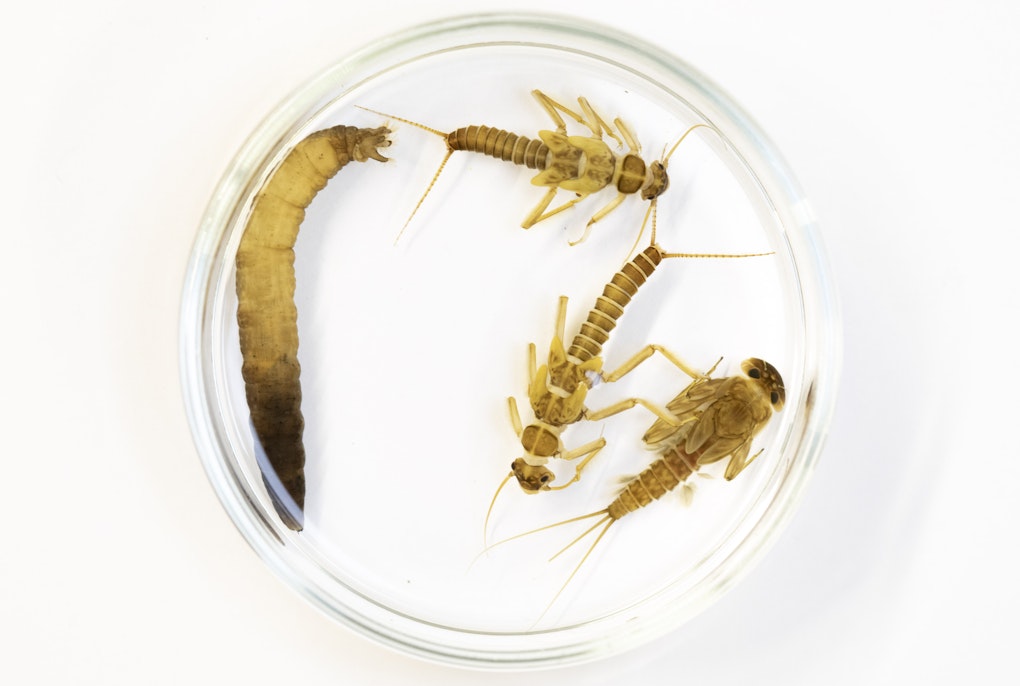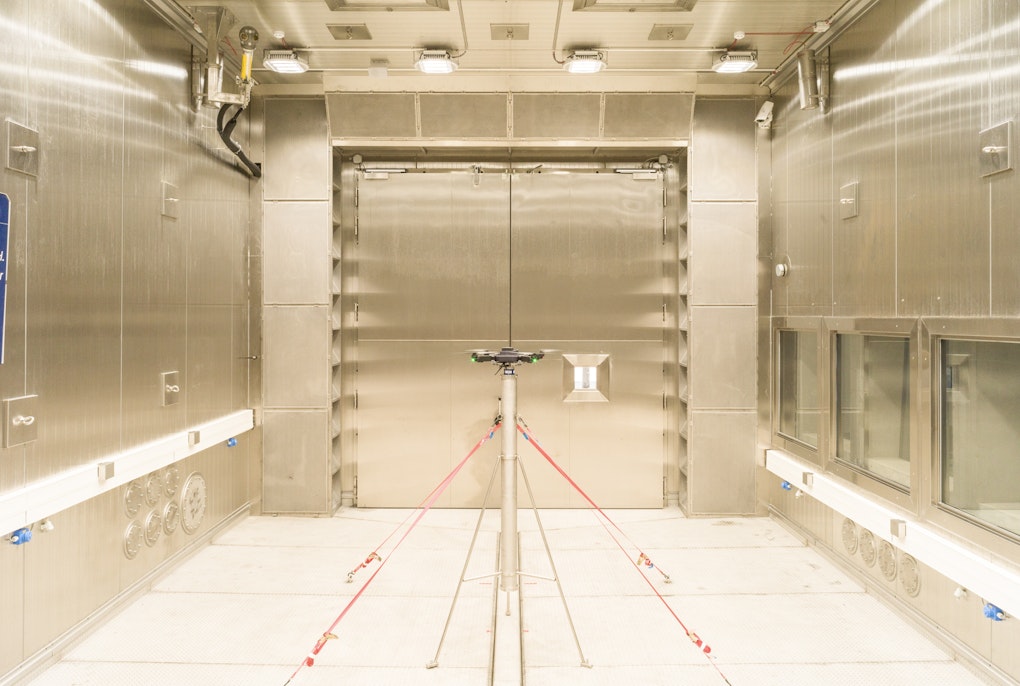magazine_ Feature
Monitoring fine dust – by bike
Combining low-cost sensors and bikesharing to collect more pollution-monitoring measurements in the city
Low-cost, versatile and energy-efficient sensors would make environmental monitoring in our cities more widespread and extensive. In Greece, a bikesharing company wants to expand its fleet of bicycles with low-cost sensors and use them to measure particulate matter, with benefits for both citizens and municipalities who would be able to benefit from more data on city pollution. However with innovation comes challenges and the Center for Sensing Solutions is working to solve technical aspects associated with this idea by drawing on what has already been tested in South Tyrol.
High-precision sensors are often the standard in research, but costs are significant. And from the lab to the real world, high-precision sensors are not necessarily the best solution: the accuracy of the data collected may be too exact than necessary for their actual use, causing costs to rise out of proportion.
A clear example is represented by environmental monitoring. In our cities, monitoring refers to the collection of data on air quality - such as the presence of fine dust and nitrogen oxides - temperature, humidity and other parameters. In short, it is a real-time snapshot of the city's environment, for the use and consumption of administrations and inhabitants.
From the lab to the real world, high-precision sensors are not necessarily the best solution.
Environmental monitoring in cities is usually carried out by means of a small number of fixed monitoring stations, which use particularly sophisticated and expensive sensor technology. The downside is that the information collected in this way only covers certain areas of the city.
In order to make data collection more comprehensive and to map different districts in greater detail, hybrid solutions that use low-cost sensors in addition to expensive high-end sensors are being sought.
Bicycles could offer further help. A single sensor on the move - placed on a bicycle - would make monitoring even more efficient, extensive and cost-effective.
Sensors, bikes and air quality
Cyclopolis is a bikesharing company currently operating in several Greek cities. In a pilot project, it has decided to turn some of its bicycles in service in Athens, into real mobile stations for detecting pollutants, in particular PM10 and PM2.5 particulate matter. To the eye of the citizen, this would make very little difference - the sensors for environmental monitoring are small - but the for municipalities the company's service could prove invaluable, as they would be able to benefit from a powerful tool for collecting environmental data - at practically no cost.
Sensors installed on bicycles should be low-cost, but at the same time be able to ensure a certain quality of data in order to properly integrate the information collected by the fixed stations. This is not an easy task.
That's why the Greek company contacted researchers at the Eurac Research Center for Sensing Solutions where researchers had already created two-wheeled prototypes of environmental detection that they had pedalled through the streets of Bolzano in 2020. The aim? To understand how to deal with all the problems associated with this type of monitoring.
The challenges of low-cost sensors
"Building monitoring systems with low-cost sensors might seem easier than working with high-precision sensors, but in reality that’s not the case. In fact, designing and implementing such systems presents us with several challenges," warns Roberto Monsorno, Head of the Center for Sensing Solutions at Eurac Research. "There are several problems to be addressed: for example, it is necessary that the sensors consume as little energy as possible, while still working over long distances. That's why we apply tiny energy-saving devices to the sensor and - above all - work on the method of data transmission.
The sensors transmit the data they collect to receiving antennas, from where the data is processed, stored in servers and retrieved when necessary. Data transmission is one of the most energy-consuming activities. For example, the wireless internet we are all familiar with, is one such particularly energy-intensive data transmission protocol.
Center for Sensing Solutions ITVideo: Fabio Dalvit | Eurac Research
The first prototype, designed by Cyclopolis, worked via Wi-Fi. However, the researchers at the Center for Sensing Solutions opted for the LoRaWAN instead – a technology which enables long-distance transmission with very little power.
The Center has been experimenting with this technology for some years now and in 2020, they installed an experimental LoRaWAN transmission network in NOItechpark, Bolzano's technology park, which is available to companies based in the park for sensor testing and services relating to the Internet of Things.
Data quality is 'adjusted' by artificial intelligence
Another key aspect of low-cost sensors is the need to ensure that the data quality is sufficient enough to be approved by regulators and integrated with the data from fixed monitoring stations. "Compared to more expensive sensors, low-cost sensors tend to lose data quality over time. In order to overcome this problem without relying on continuous and costly maintenance, we have experimented over the years with artificial intelligence solutions.
To ensure sufficient data quality, we also experimented with the use of artificial intelligence
By means of machine learning - that is by training algorithms on huge amounts of data - the software that receives the data from the sensors learns how to correct it either by eliminating interference or background noise that would compromise quality for example.
These technologies were tested by researchers at the Center for Sensing Solutions in collaboration with Orma Solutions, a Bolzano-based company which designs and implements electrical installations and IT solutions.
The pilot project on the streets of Athens
Once these issues have been successfully addressed, the first sensors will be tested in South Tyrol - more precisely on some of the city of Merano’s bikesharing fleet - which will be supported by NoiTechpark’s Tech-Transfer Digital Unit. The tests will then be extended to Greece in autumn 2022 when the first bike-tracking stations will hit the streets of Athens. The pilot project will cover an area of around 6km², with three receiving antennas and 10 bicycles. FOS GROUP, whose R&D department is based at NOI Techpark, is also collaborating and will work on both the business model and market development associated with the prototype.
 technical documentation
technical documentationThe Smart4all project
The pilot project in Athens is a technology transfer activity within the framework of the wider Horizon 2020 European project Smart4all. The project involves 26 partners from 16 countries in Eastern, Central and Southern Europe, with the aim of accelerating digital transformation and increasing e-skills across Europe. Smart4all began in January 2020 and will run for another two years. Go to the project website: https://smart4all-project.eu/




